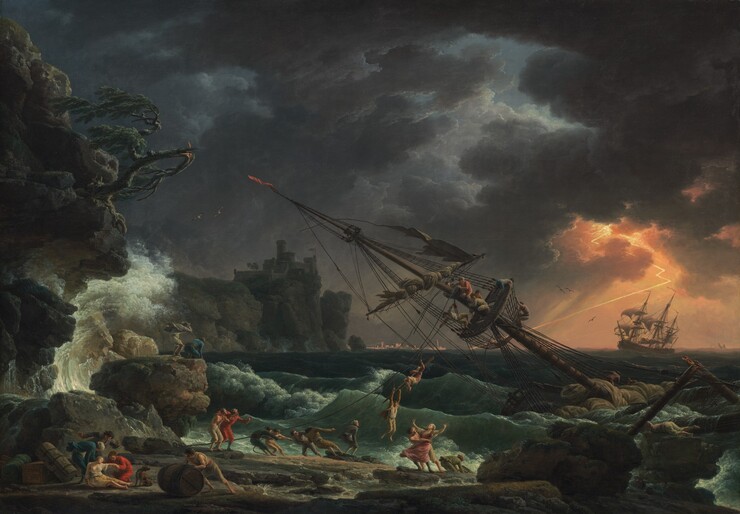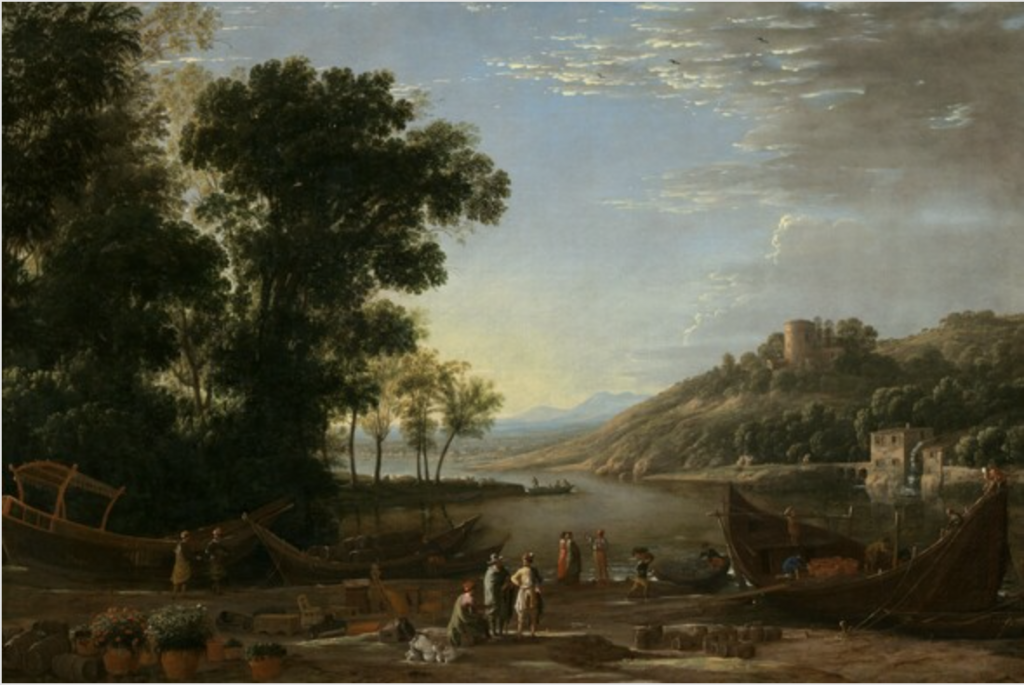
Claude Lorrain was a French painter best known for ideal landscape paintings. He was also a draughtsman and etcher of the Baroque era. He was born in 1600 in a small village of champagne. It is said that both Claude’s parents died early on in his life, and he lived with his older brother Jean. Jean was practising art at the time and significantly influenced Claude later interest and success in art. Within a few years of his parent’s death, he travelled to Italy to work for Goffredo Wals in Naples and Agostino Tassi in Rome. His apprenticeship with Tassi taught him the basics of his art and developed an interest in perspective, leading to his landscape paintings.

Traditional Italian landscapes heavily influenced Claudes style and subject matter. Claude often included a number of figures in his works. This wasn’t as typical among his fellow artist. These figures could consist of illustrations of travellers, shepherds, and sailors, whatever was appropriate for the scene he was depicting.

One notable work that I enjoy is the Seaport with the Embarkation of the Queen of Sheba, finished in 1648. This painting is an excellent example of how Claude borrowed from renaissance and baroque roman architecture as a base to create imaginary grand temples and palaces.
A few other notable works include the Landscape with Merchants (1630), The Shipwreck (1772)

November 15, 2021 at 7:25 pm
Samantha,
Not bad work on Lorrain here. Pretty good information through your research. What I would like to see more of is more of your own personal thoughts about the artists you are writing about. What drew you to him, what resonates with you? That sort of thing. Anyhow thanks for back peddling and getting this in. I’ll give you a 2/2 here. Also you score on the mid term quiz was 26/50 which is just scraping through.
Jeff